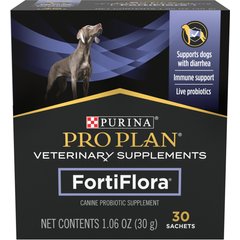Water Mold Infection (Pythiosis) in Dogs
Pythiosis in Dogs
Belonging to the phylum Oomycota, Pythium insidiosum is a parasitic spore that is capable of spontaneous movement (or a motile zoospore) that enters the body through the nose/sinuses, esophagus, or through the skin. Infection then usually settles in the dog's lungs, brain, sinuses, gastrointestinal tract, or skin.
Affected dogs will exhibit subcutaneous or cutaneous masses, which develop as lesions on the legs, tail, head, neck, perineum, and/or the inside of the thigh.
Pythiosis is typically thought of as occurring in swampy areas in the southeastern U.S., and has thus been nicknamed “swamp cancer.” Signs of pythiosis usually appear in the fall or early winter months, and while this organism does typically thrive in tropical and subtropical waters, such as ponds, wetlands, and swamps, it has been found to occur as far west as the central valley of California.
The condition or disease described in this medical article can affect both dogs and cats. If you would like to learn about how pythiosis affects cats, please visit this page in the PetMD health library.
Symptoms and Types
Pythiosis of the lungs, brain, or sinus will manifest in the dog as stuffiness, head pain, fever, coughing, and swelling of the sinuses. Infection of the dog's digestive tract leads to a chronic disease, which causes the tissue of the stomach and/or intestines to become severely thick. Other symptoms of gastrointestinal (GI) pythiosis include:
- Fever
- Vomiting
- Diarrhea
- Regurgitation
- Long-term weight loss
- Abdominal mass
- Abdominal pain
- Enlarged lymph nodes
Pythiosis of the skin (or cutaneous pythiosis) results in the development of swollen, non-healing wounds, and invasive masses of ulcerated pus-filled nodules and draining tracts. Tissue death (necrosis) follows, with the affected skin eventually turning black and wasting.
Vet Recommended Health Support
- Purina Pro Plan Veterinary Diets FortiFlora Powder Probiotic Digestive Supplement for Dogs, 30 count$30.99Chewy Price
- VetClassics Pet-A-Lyte Oral Electrolyte Solution Dog & Cat Supplement, 32-oz bottle$18.53Chewy Price
- Nutramax Welactin Omega-3 Liquid Skin & Coat Supplement for Dogs, 16-fl oz$27.99Chewy Price
- Fera Pets USDA Organic Pumpkin Plus Fiber Support for Dogs & Cats, 90 servings$34.95Chewy Price
Causes
This infection is caused by direct contact with water that accommodates Pythium insidiosum, a water borne fungal parasite. It is usually swallowed or inhaled by the dog, and from there makes its way to the animal's intestinal tract.
Diagnosis
Your veterinarian will perform a complete physical exam on your dog, with a chemical blood profile, a complete blood count, a urinalysis and an electrolyte panel. A blood sample will be sent for serological testing (via an Enzyme-Linked Immunosorbent Assay, called ELISA) to the Pythium Laboratory at Louisiana State University.
You will need to give a thorough history of your dog's health, onset of symptoms, and recent activities, including any exposure your pet may have had to water in the last several months.
Abdominal radiographs in dogs with GI pythiosis may show an intestinal blockage, intestinal wall thickening, or an abdominal mass. An ultrasound image of the dog's abdomen will tend to show thickening of the wall of the stomach or intestine. Enlarged lymph nodes may also be evident, as it is an indication of an infection.
While biopsy can suggest a diagnosis of pythiosis, a positive culture will be needed for a definitive diagnosis. There is also an immunohisto-chemical stain, which specifically attaches to P. insidiosum hyphae in thin sections of tissue.
Another method for definitively diagnosing pythiosis is to test tissue samples and cultured isolates with nested Polymerase Chain Reaction, a test of dog's deoxyribonucleic acid (DNA).
Treatment
The sooner you take your dog for treatment after the first signs appear, the better the prognosis.
All dogs will need to undergo surgical removal of as much affected tissue as possible. The tissue remaining after surgery will then be treated with a laser (photoablation) to kill any fungal filaments in the surrounding tissue. Enlarged lymph nodes in the abdominal cavity should be biopsied (tissue will be surgically removed for examination). Medical therapy should be continued for a minimum of six months.
All dogs will need to undergo surgical removal of as much affected tissue as possible. The tissue remaining after surgery will then be treated with a laser (photoablation) to kill any fungal filaments in the surrounding tissue. Enlarged lymph nodes in the abdominal cavity should be biopsied (tissue will be surgically removed for examination). Medical therapy should be continued for a minimum of six months.
Living and Management
Your veterinarian will schedule follow-up appointments every two to three months after the initial surgery so that ELISA serological tests can be performed. Abdominal X-rays should be retaken at each visit to re-evaluate intestinal signs of disease. A chemical blood profile should be repeated at each check-up, as well, to monitor your pet for liver toxicity while it is being treated with Itraconazole, the drug of choice for treating pythiosis.
Prevention
In 2004, a new immunotherapeutic vaccine for dogs was made available for pythiosis. As soon as your dog is diagnosed, it should be vaccinated with the pythiosis vaccine to reduce the size of the lesion. Surgery will then be easier and more successful.




